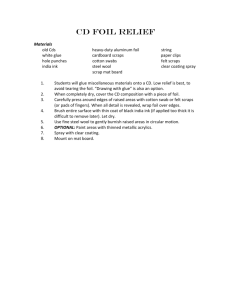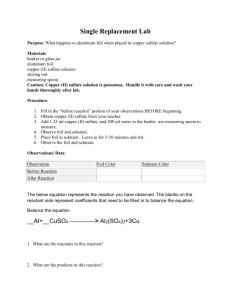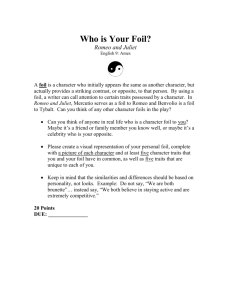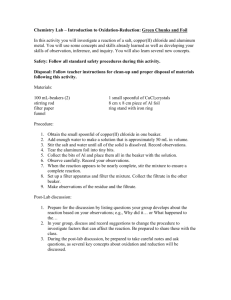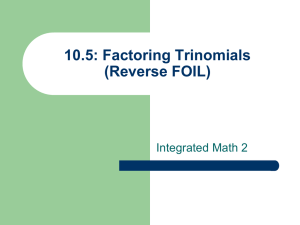Repousse – 3D/2D Design
advertisement
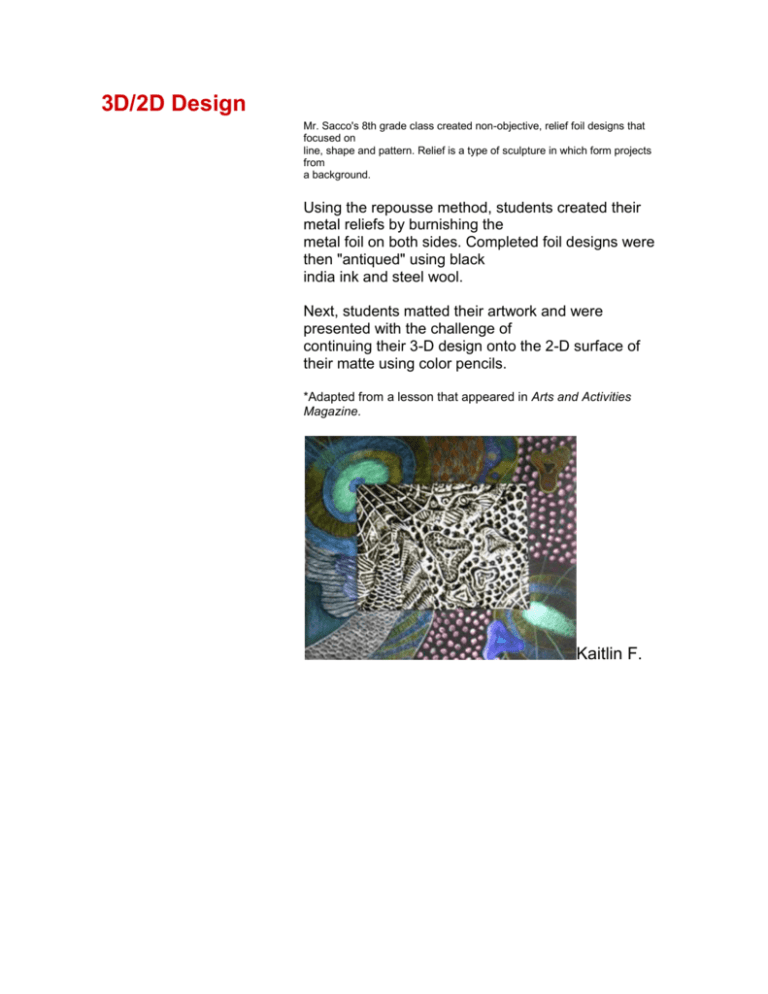
3D/2D Design Mr. Sacco's 8th grade class created non-objective, relief foil designs that focused on line, shape and pattern. Relief is a type of sculpture in which form projects from a background. Using the repousse method, students created their metal reliefs by burnishing the metal foil on both sides. Completed foil designs were then "antiqued" using black india ink and steel wool. Next, students matted their artwork and were presented with the challenge of continuing their 3-D design onto the 2-D surface of their matte using color pencils. *Adapted from a lesson that appeared in Arts and Activities Magazine. Kaitlin F. Megan W. Brendan Y. Karen G. Brianna G. Lesson Plan Starter: Copper Repoussé by Patricia Ronkartz (submitted Apr 19, 2011) South Crowley Elementary - LA, United States for grade level » Middle (6-8) duration » 2 sessions (about 50 minutes per session) media type » Sculpture subject integration » Art History The student will research and discuss the art and techniques of foil repoussé. The student will research and discuss the art of Mary Englbreit with special attention to the borders that she uses. The student will create a low relief image in metal (copper foil) using engraving techniques of pushing the metal both from the front and the back of the foil. Sample Artwork: Materials (what you need) 4 x 6 index cards Copper foil (4 x 6” per student) Wooden clay or metal foil tools (can substitute dull pencils, ballpoint pens, popsicle sticks) Magazines of newspapers India ink Sponge brush Fine steel wool Glue gun Black foam core board 8 x 10” per student Procedure (what you need) 1. Research, investigate, and discuss copper foil tooling and repousse’. 2. Look at the work of Mary Engelbreit to see how decorative borders add to a piece of art. 3. Draw your design and border in detail and in full size on the index card before you start on the foil. 4. Draw the design, including a border on a 4 x 6” index card. 5. Cut a piece of copper foil 4 x 6” 6. Place an old magazine or folded newspaper under the foil so you have a soft surface 7. Tape your design over the metal 8. Use a pointed clay or foil working tool to trace the main components of your design (dull pencils or ball point pens work well if you do not have the tools.) Once basics have been traced remove the drawing from the foil and use it for reference. 9. Decide which shapes will be convex and which will be concave. 10. Work slowly, going over the concave areas a number of times with gentle pressure to stretch the metal without tearing the foil. Check from reverse side often. 11. Turn the foil over, and reinforce convex areas in the same manner. 12. Be sure to work both sides of the metal to form the relief sculpture with a variety of depths from very shallow to highly raised. 13. Add texture by creating patterns lines, dots, circles, etc. 14. When complete, use a sponge brush to apply a thin coat of Indian ink and allow it to dry. 15. When dry, carefully rub with fine steel wool to remove the ink from the raised areas, allow the ink to remain in concave areas of the design. (Many art foils are made with thin coats of copper over other metals, be careful not to rub so hard that you remove the coating, on the other hand, if you want a silver highlight to some of the raised areas you may rub harder.) 16. Use a glue gun to mount the finished piece on black foam core board. Assessment Display, discussion and critique Discussion Questions What is repousse’? How is it done? What and where are some famous or historic pieces of repousse’ art? What can a border do for a piece of art? How does Mary Englebreit use borders in her work? How important is variation of depth in reposse’ art? Resources http://www.artmetal.com/brambush/forging/proj04/worsley.htm http://www.whimsie.com/copper%20foil.html http://basiccopper.com/anrebyfrmc.html http://www.repoussetools.com/ http://quickshipmetals.com/blog/2011/01/20/672/ http://www.maryengelbreit.com/ http://www.greenleafgallery.com/MaryEngelbreit.html Follow-up Activities Display, discussion and critique Content Keywords boarder, concave, convex, copper foil, metal tooling, repousse' Curriculum Standards 1-E (5 - 8) Students select media, techniques, and processes; analyze what makes them effective or not effective in communicating ideas; and reflect upon the effectiveness of their choices 1-F (5 - 8) Students intentionally take advantage of the qualities and characteristics of art media, techniques, and processes to enhance communication of their experiences and ideas 2-D (5 - 8) Students generalize about the effects of visual structures and functions and reflect upon these effects in their own work 2-E (5 - 8) Students employ organizational structures and analyze what makes them effective or not effective in the communication of ideas 2-F (5 - 8) Students select and use the qualities of structures and functions of art to improve communication of their ideas 3-C (5 - 8) Students integrate visual, spatial, and temporal concepts with content to communicate intended meaning in their artworks 3-D (5 - 8) Students use subjects, themes, and symbols that demonstrate knowledge of contexts, values, and aesthetics that communicate intended meaning in artworks 4-D (5 - 8) Students know and compare the characteristics of artworks in various eras and cultures 4-E (5 - 8) Students describe and place a variety of art objects in historical and cultural contexts 4-F (5 - 8) Students analyze, describe, and demonstrate how factors of time and place (such as climate, resources, ideas, and technology) influence visual characteristics that give meaning and value to a work of art 5-D (5 - 8) Students compare multiple purposes for creating works of art 5-E (5 - 8) Students analyze contemporary and historic meanings in specific artworks through cultural and aesthetic inquiry 5-F (5 - 8) Students describe and compare a variety of individual responses to their own artworks and to artworks from various eras and cultures 6-C (5 - 8) Students compare the characteristics of works in two or more art forms that share similar subject matter, historical periods, or cultural context 6-D (5 - 8) Students describe ways in which the principles and subject matter of other disciplines taught in the school are interrelated with the visual arts


